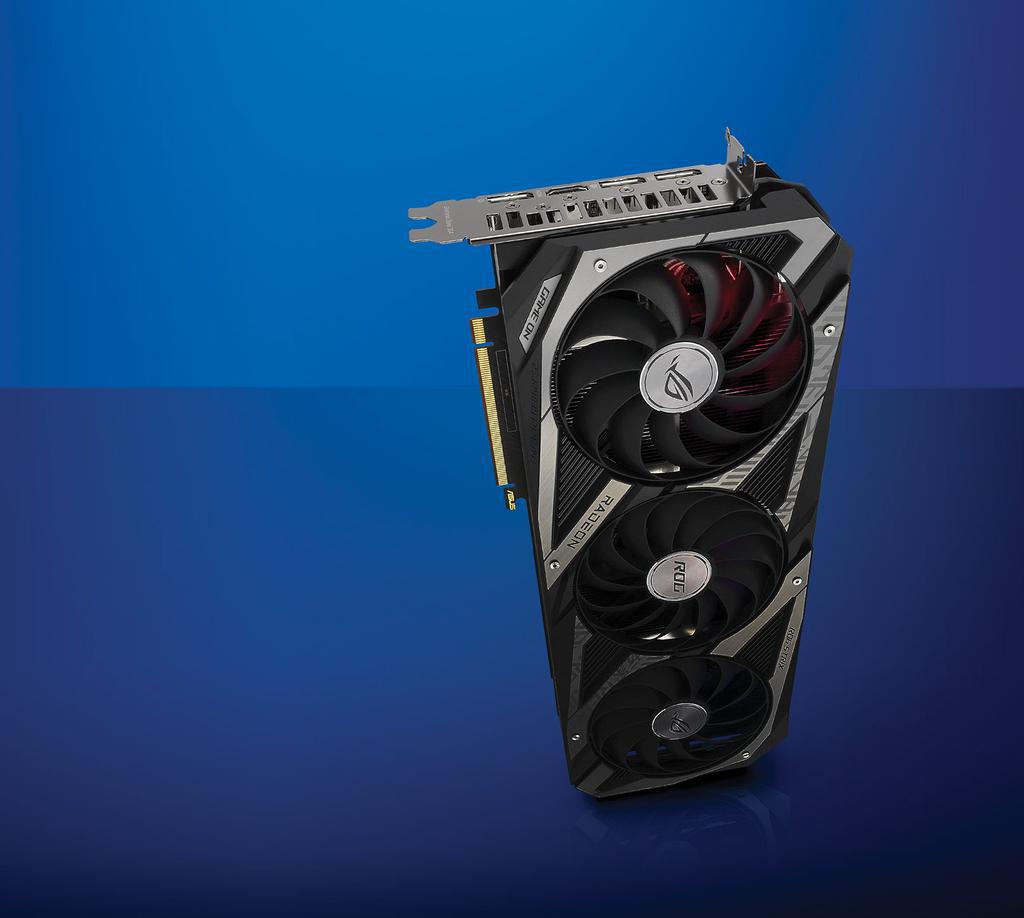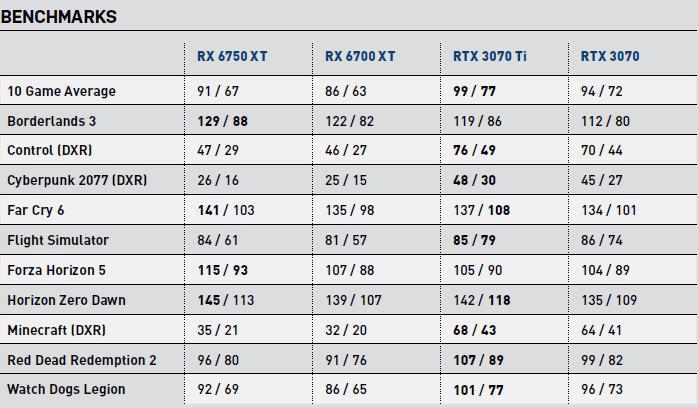Asus RX 6750 XT ROG Strix Review

AMD’S TRIFECTA of refreshed RDNA 2 GPUs continues with the Radeon RX 6750 XT, a minor update to the existing RX 6700 XT initially launched in March last year. Over a year later, the main update to AMD’s Navi 22 offering consists of slightly boosted GPU clocks and power limits, coupled with 18Gbps GDDR6 memory. That all sounds fine, but what’s not quite so welcome is the $ jump in MSRP. Asus has also seen the ante and raised it another $ for its ROG Strix model, which tacks on another 30W of power and a 43MHz overclock. Read our Asus RX 6750 XT ROG Strix Review.
–JARRED WALTON

In terms of the numbers, relative to the reference 6700 XT, that means you get a 0.7 percent increase in GPU clocks, with 12.5 percent more memory bandwidth, 8.7 percent more power, and a 15 percent increase in price. Then Asus provides an additional 1.7 percent factory overclock and 12 percent more power, with an 18 percent bump in pricing.
On the surface, it’s frankly questionable value, especially while GPU prices continue to drop—the cheapest competing Nvidia RTX 3070 card currently costs $ Still, it’s clear that pricing for AMD’s GPU refresh has more to do with early 2022 than what we’re seeing now, and we wouldn’t be surprised to see retail pricing on the RX 6750 XT drop below $ in the near future. That’s assuming supply continues to outpace demand, which seems likely now that cryptocurrency mining profitability has taken a nosedive.
On paper, the combination of increased power limits and higher clock speeds should boost performance by up to 13 percent. In practice, even with the factory overclocked Strix card going up against a reference RX 6700 XT, the new GPU underwhelms, delivering a six percent overall improvement in fps, which was relatively consistent across our tested resolutions and settings. We saw between four to nine percent higher performance for our test suite, but most games landed around the six percent mark.
AMD ends up having to compete against both its existing RX 6700 XT, which will continue to be sold, as well as Nvidia’s RTX 3060 Ti, RTX 3070, and RTX 3070 Ti. The RTX 3070 came out ahead in our overall metric, though that is skewed by the three ray-tracing games we included in our test suite. AMD falls well short of Nvidia in DXR (DirectX Raytracing) games, particularly those using more than a single RT effect. The RTX 3070 was typically around 50 percent faster in DXR games—and up to 90 percent faster in extreme cases such as Minecraft.
There’s some good news in that AMD’s FSR 2.0 (see Tech Talk, page 11) offers a competitive alternative to Nvidia’s DLSS, though only a few games are available with FSR 2.0 so far. In contrast, Nvidia has over 200 games and applications that use DLSS and that number continues to grow every month. Considering that you can get better performance and features for roughly the same price—and even power consumption favors the RTX 3070—there’s no compelling reason to opt for AMD’s refreshed RX 6750 XT at this stage in the life cycle of the existing GPU architectures.
At least you get 12GB of memory, whereas Nvidia’s 8GB feels quite stingy for a high-end card in 2022. But if you’re hoping for a major upgrade in performance, you’ll be better off sticking with whatever you’re currently running and waiting for the next-generation architectures to arrive later this year.
As for the Strix card, it has a big and beefy cooler that did exceptionally well in our testing, typically keeping the GPU below 60°C while remaining very quiet—no surprise, as the same core design is used on higher tier RX 6800 XT class cards. There’s also a decent amount of RGB lighting and dual VBIOS support. Those are nice extras, though we’re still not convinced they’re worth the price premium.
VERDICT 7
Asus RX 6750 XT ROG Strix
+ GIANT LEAPS 18Gbps GDDR6; plenty of memory; excellent cooling.
– BABY STEPS Barely faster than 6700 XT; struggles with DXR; questionable value.
When you purchase through links on our site, I may earn an affiliate commission. Here’s how it works.
$ MSRP, www.asus.com
BENCHMARKS

Best scores are in bold. All testing conducted with a Core i9-12900K, MSI Pro Z690-A WiFi DDR4, 2x16GB DDR4-3600 CL16, 2TB Crucial P5 Plus M.2 SSD, Cooler Master MWE 1250 Gold V2. Scores are average framerates at 1920×1080 / 2560×1440 ultra, with ray tracing enabled in Control, Cyberpunk, and Minecraft.
SPECIFICATIONS
Architecture Navi 22
Lithography TSMC N7
Boost Clock 2643MHz
GPU Cores 2560
Memory 12GB GDDR6
TFLOPS FP32 13.5
Bandwidth 432GBps
TDP 280W
Connectors HDMI 2.1, 3x DisplayPort 1.4


